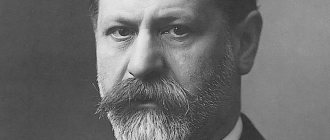Many people have a stereotype that the goal of any psychologist is to reveal the insides of the soul, get to the bottom of problems, find out the root causes of suffering that goes back to childhood, and work with them. In fact, this is far from the case. For example, one of the directions - behaviorism - studies primarily behavior. In their opinion, the most important things are reflexes, acquired skills, reactions to external stimuli and motivation. This is what determines the essence of a person’s mental organization. Based on this concept, behavioral psychotherapy was created and successfully applied in practice.
What it is
Behavioral psychotherapy is one of the most effective and popular areas in psychology and psychotherapy. Considers some mental illnesses as a consequence of incorrectly formed skills during life.
The scientific basis for it was behaviorism, so its alternative names are behavioral-behavioral therapy or simply behavioral therapy. It is considered one of the newest methods, although in fact it has been used for a long time: its features can be seen in the combination-reflex therapy of Bekhterev, the practical application of Pavlov’s conditioned and unconditioned reflexes, the systematic desensitization of M. K. Jones - all this was actively introduced already in the 20s gg. XX century. Even the term itself was born in 1911 (it was first used by Thorndike in his writings).
The goal of behavioral therapy is to eliminate incorrect behavior strategies and instill useful skills in the patient. Typically, treatment follows a well-established scheme:
Behavior analysis → Identification of an incorrectly formed way of activity → Step-by-step correction by instilling a new skill → Practicing, training → Checking how successfully it can be applied in real life
Everyone is so accustomed to the fact that the root of any evil (be it physical or mental illness) lies in the causes and without eliminating them, recovery is impossible, that the behavioral direction in psychotherapy at first was often criticized and even ridiculed. However, soon his opponents and ill-wishers were defeated, since this method has no equal when working with phobias, eating disorders, autism and alcohol addiction. Patients are completely freed from them. Other concepts cannot boast of such results.
Through the pages of history. Despite the fact that behavioral psychotherapy took shape as an independent direction only in the 50s of the 20th century, its methods have been used in the USSR since the 20s. In the Soviet scientific literature of those times it was referred to as “conditioned reflex psychotherapy.”
What is reciprocal inhibition and replacement stimulus?
The big breakthrough in Wolpe's work was his discovery of a principle showing that anxiety or fear can be weakened if at the same time there is a factor that counteracts this anxiety or fear or inhibits it. In simple words, a learned reaction of fear or anxiety will be reduced or neutralized if, in situations that cause it, a person has a reaction or state that is incompatible with these emotions.
A classic example of such a “healing” factor is relaxation, but it can also be another emotion or feeling, for example, anger, self-confidence or joy. Moreover, the moment of simultaneity is important here - the coincidence of the inhibitory factor and the situation in time or the immediate preceding of the alternative reaction of the situation itself. Wolpe called this principle reciprocal inhibition.
Today, the application of this principle is reflected in practical psychotherapy, both behavioral and its other varieties. The most common and widely known tool to relieve and overcome fears, phobias and anxiety is relaxation (mainly progressive muscle relaxation according to Jacobson or Jacobson) and a calm, relaxed internal state. This is a fairly universal method, suitable for a wide variety of fears, phobias and anxiety disorders.
It is also interesting that in modern trainings and programs for self-improvement and personal change one can also find a large number of practical techniques and techniques in which a person first puts himself in a confident, comfortable, resourceful state, and then views, replays or rehearses a difficult, unpleasant or conflict situation in your imagination. There is also a factor that inhibits anxiety or fear, which is often called a resource (for example, a feeling of strength, self-confidence or calmness).
In addition to relaxation and relaxation according to Jacobson’s method, in his practice Volpe also used other substitute stimuli that performed the functions of reciprocal inhibition. Thus, for social fears, the emotion of anger or even aggression and assertive behavior gave good results. The starting point was the position that, while experiencing anger or aggression, a person cannot be afraid at the same time. By acting from a “heated” state and exhibiting assertive, confident behavior, Volpe’s clients overcame their fears and anxieties associated with certain social situations. Such assertive training or assertiveness training was used in Wolpe’s psychotherapeutic practice and gave good results. Later, Wolpe adjusted the idea of such training, emphasizing the need to take into account ethical considerations and emphasize the development of a person's social competence, respecting the interests of other participants in the situation.
In the case of neurotic sexual problems, Joseph Wolpe proposed using sexual arousal as a substitute stimulus. For example, a man suffering from sexual dysfunction on a psychogenic basis again got used to calmly and confidently interacting with women, replacing fear and feelings of inferiority with incompatible feelings of sexual arousal. Of course, such a replacement stimulus has limited use, however, its effectiveness in the treatment of sexual disorders of a neurotic nature has been shown in practice.
In addition to relaxation, anger, and sexual arousal, Joseph Wolpe tried other replacement stimuli. Among the effective methods he mentions the following:
- breathing exercises;
- self-instructions;
- competitive motor behavior (that is, physical actions that go against fear or anxiety. Examples of such actions include smiling or laughing, a power pose or “winning dance,” etc.);
- pleasant activities and incentives;
- sweets (for children);
- jokes and pranks.
As can be seen, Wolpe sought a variety of approaches to the issue of healing his clients from neurotic fears. An important discovery and truly a breakthrough in psychotherapy was the discovery of the mechanism of reciprocal inhibition and a number of states or actions that replace fear or anxiety. Perhaps the most universal among them is muscle relaxation (using the Jacobson technique or auto-training), thanks to the feelings of calm and relaxation it generates. However, the list of substitute stimuli or fear neutralizers is large, and everyone can choose the most suitable action for themselves or use a set of methods for different situations.
Basic principles
The principles on which behavioral therapy works are constantly being updated and improved.
Patterns play a major role in disease
These are the very skills and patterns of behavior that are formed throughout a person’s life. They are the source and essence of a mental disorder, play a decisive role in its development and even cause reactions from the endocrine and autonomic systems.
Treatment methods are only proven
In behavioral psychotherapy, only those treatment methods are used that have been tested more than once in laboratory conditions and bring only positive results. No experiments on patients.
"Here and now"
As in Gestalt therapy, behavioral therapy does not use hypnosis with the goal of looking into childhood and finding there the psychological trauma that becomes the cause of all troubles in the present. The work is aimed at what is bothering a person at the moment and how to cope with this problem “here and now.”
Minimal Intrusion
The specialist does not meticulously delve into the soul, does not ask to bring out hidden thoughts and desires, does not look into the corners of the past. Maximum patient comfort and respect for his personal boundaries are one of the main principles of this direction.
Everything is relative
An alcoholic for society is a patient who requires long-term and compulsory treatment. For a psychotherapist working in the behavioral direction, this is the same person as everyone else, but he has formed an incorrect attitude towards alcohol, which can be corrected.
The opposite situation. Most members of society live the rest of their days with phobias and do not find it necessary to get rid of them (unless they take a pathological form). Nobody considers them sick. And in behavioral psychotherapy these are the main patients. So here they emphasize the relativity of such concepts as “norm-deviation” and “health-illness”.
Psychotherapist - dominant
When you come to see a psychotherapist, you don’t need to try to explain your experiences and formulate the problem. The “speaking out” technique is practically not used here. The main tool is dialogue, and the leading role in it is played by the specialist. He asks questions according to a certain pattern, and after making a diagnosis he gives tasks and exercises. So, if you want to cry into your vest, this is definitely not the place.
Using outside help
This cannot be called family psychotherapy, since it does not work with common problems. Sometimes people close to the patient can be invited to classes, but only for the purpose of helping him consolidate (or, conversely, “unfasten”) a skill.
Stages of behavior therapy
Behavioral psychotherapy, as a separate direction, was identified around the middle of the last century. This teaching was rapidly gaining popularity, as it made it possible to achieve positive results in two or three sessions of psychotherapy.
Behavioral therapy is based on the idea that some types of mental disorders are associated with malformed behavioral skills. Such disorders include phobias, behavioral disorders and various addictions, sleep and eating disorders, difficulties in speech development in children and other problems for which a specific symptom can be identified for correction.
Treatment is carried out in several stages:
1. Behavior analysis. This stage is the longest, sometimes lasting several weeks. The psychotherapist comprehensively studies the patient’s behavioral characteristics in order to create the most optimal treatment regimen.
2. Drawing up a treatment plan. Once the patient’s problems have been identified, we can proceed to their correction. If several problems are found, they are solved sequentially.
3. Therapy ends when the patient has developed behavioral skills that allow him to cope with the problem.
In behavioral therapy, the therapist acts as a teacher who helps the patient acquire new behavioral skills. In this case, a person’s motivation plays a huge role. The patient must clearly understand the meaning of all techniques and methods used by the psychotherapist. This helps you complete all tasks correctly and motivates you to continue studying.
Indications
Behavioral psychotherapy does not treat all mental disorders, but only those that are based on a clear and persistent violation of acquired skills and incorrectly developed methods of action. Indications for contacting such a specialist:
- panic attacks;
- phobias;
- obsessive-compulsive disorder;
- depression, dysthymia, bipolar affective disorder, cyclothymia, manic syndrome;
- eating disorders: bulimia, anorexia, psychogenic overeating, allotriophagia;
- sexual psychogenic problems based on psychopathy, endogenous psychoses and character accentuations;
- schizophrenia;
- antisocial, deviant behavior;
- insomnia, nightmares;
- hyperactivity;
- autism;
- poor performance at school, speech therapy problems in children.
As practice shows, therapy is effective in the treatment of many physiological diseases: hypertension, migraine, bronchial asthma, stomach problems.
general information
One of the features of cognitive behavioral therapy is the division and systematization of all personal emotions into two broad groups:
- productive, also called rational or functional;
- unproductive, called irrational or dysfunctional.
The group of unproductive emotions includes the destructive experiences of an individual, which, according to the concept of CBT, are a consequence of a person’s irrational (illogical) beliefs and beliefs - “irrational beliefs”. According to proponents of cognitive behavioral therapy, all unproductive emotions and the associated dysfunctional pattern of individual behavior are not a reflection or result of the subject’s personal experience. All irrational components of thinking and the unconstructive behavior associated with them are a consequence of a person’s incorrect, distorted interpretation of his real experience. According to the authors of the methodology, the real culprit of all psycho-emotional disorders is the distorted and destructive belief system present in the individual, which was formed as a result of the individual’s incorrect beliefs.
The foundation of cognitive behavioral therapy is based on these ideas, the main concept of which is as follows: the emotions, feelings and behavior patterns of the subject are determined not by the situation itself in which he finds himself, but by how he perceives the current situation. The main strategy of CBT is based on these considerations - to identify and identify dysfunctional experiences and stereotypes, and then replace them with rational, useful, realistic feelings, taking full control of your train of thought.
By changing your personal attitude towards some factor or phenomenon, replacing a rigid, rigid, unconstructive life strategy with flexible thinking, a person will gain an effective worldview.
The resulting functional emotions will improve the psycho-emotional state of the individual and ensure excellent well-being under any life circumstances. On this basis, a conceptual model of cognitive behavioral therapy , presented in an easy-to-understand ABC formula, where:
- A (activating event) – a certain event occurring in reality that is a stimulus for the subject;
- B (belief) – a system of personal beliefs of an individual, a cognitive construct that reflects the process of a person’s perception of an event in the form of emerging thoughts, formed ideas, formed beliefs;
- C (emotional consequences) – final results, emotional and behavioral consequences.
Cognitive-behavioral therapy is focused on identifying and subsequently transforming distorted components of thinking, which ensures the formation of a functional behavioral strategy for the individual.
Contraindications
Behavioral psychotherapy is contraindicated in some cases. This applies to those patients who have a persistent impairment of consciousness if they cannot understand what is required of them. This entails the inability to perform exercises and tasks aimed at treatment.
Absolute contraindications:
- worsened psychoses;
- prolonged depression in severe form;
- deep UO.
Relative contraindications:
- personality disorders - a course of treatment will be effective only if the psychotherapist manages to establish trusting contact with the patient;
- mild form of mental retardation - treatment is possible, but only with the selection of simple tasks and exercises that the patient can cope with.
Each specific case of contacting a psychotherapist is considered individually.
Problems that arise during therapy
- The client's tendency to verbalize at length what he is thinking and feeling, as well as to try to find the causes of his problems in what he has experienced in the past. The reason for this may be the idea of psychotherapy as a method that “allows you to speak out and understand yourself.” In this case, you should explain to the client that behavioral therapy consists of performing specific exercises, and its goal is not to understand the problem, but to eliminate its consequences. However, if the therapist sees that the client needs to express his feelings or find the underlying cause of his difficulties, then cognitive or humanistic psychotherapy techniques can be added to behavioral methods, for example.
- The client's fear that correcting his emotional manifestations will turn him into a “robot.” In this case, you should explain to him that thanks to behavioral therapy, his emotional world will not become poorer, just that negative and maladaptive emotions will be replaced by pleasant emotions.
- The client's passivity or fear of the effort required to perform the exercises. In this case, it is worth reminding the client what consequences such an installation may lead to in the long term. At the same time, you can review the treatment plan and start working with simpler tasks, breaking them down into separate stages.
Sometimes in such cases, behavioral therapy uses the help of the client's family members. Sometimes the client has dysfunctional beliefs and attitudes that interfere with his involvement in the therapeutic process. These settings include:
- Unrealistic or inflexible expectations about the methods and results of therapy, which may be a form of magical thinking (assuming that the therapist can fix any problem the client has). In this case, it is especially important to find out what the client's expectations are, and then create a clear treatment plan and discuss this plan with the client.
- The belief that only the therapist is responsible for the success of therapy, and that the client cannot and should not make any effort (external locus of control). This problem not only significantly slows down the progress of treatment, but also leads to relapses after stopping meetings with the therapist (the client does not consider it necessary to do his “homework” and follow the recommendations that were given to him at the time of completion of therapy). In this case, it is helpful to remind the client that in behavior therapy, success is not possible without the active cooperation of the client.
- Dramatizing the problem, for example: “I have too many difficulties, I will never cope with this.” In this case, it is useful to begin therapy with simple tasks and exercises that provide quick results, which increases the client's confidence in his ability to cope with his problems.
- Fear of judgment: The client is embarrassed to tell the therapist about some of his problems, and this prevents the development of an effective and realistic plan for therapeutic work.
If such dysfunctional beliefs exist, it makes sense to use cognitive psychotherapy methods to help the client reconsider his attitudes.
One of the obstacles to achieving success is the client's lack of motivation. As stated above, strong motivation is a prerequisite for the success of behavior therapy. For this reason, motivation for change should be assessed at the very beginning of therapy, and then, in the course of working with the client, its level should be constantly checked (we should not forget that sometimes the client’s demotivation takes hidden forms. For example, he may stop therapy, assuring that his problem has been solved. In behavioral therapy this is called “escape to recovery”). To increase motivation:
- It is necessary to provide clear and precise explanations about the importance and usefulness of the techniques used in therapy;
- You should choose specific therapeutic goals, coordinating your choice with the desires and preferences of the client;
- It has been noticed that clients often focus on problems that have not yet been solved and forget about the successes already achieved. In this case, it is useful to periodically evaluate the client's condition, visually showing him the progress achieved due to his efforts (this can be demonstrated, for example, using charts).
- A feature of behavioral therapy is its focus on quick, specific, observable (and measurable) results. Therefore, if there is no significant progress in the client's condition, then the client's motivation may disappear. In this case, the therapist must immediately reconsider the chosen tactics of working with the client.
- Because in behavior therapy the therapist works collaboratively with the client, it should be explained that the client is not obligated to blindly follow the therapist's recommendations. Objections on his part are welcome, and any objection should be immediately discussed with the client and, if necessary, changes to the work plan.
- To increase motivation, it is recommended to avoid monotony in working with a client; It is useful to use new methods that arouse the greatest interest in the client.
At the same time, the therapist should not forget that the failure of therapy may be associated not with the client’s dysfunctional attitudes, but with the hidden dysfunctional attitudes of the therapist himself and with errors in the application of behavioral therapy methods. For this reason, it is necessary to constantly use self-observation and the assistance of colleagues to identify which distorted cognitive attitudes and problematic behaviors prevent the therapist from achieving success in his work. The following errors are common in behavioral therapy:
- The therapist gives the client homework or a self-monitoring questionnaire, but then forgets about it or does not take the time to discuss the results. This approach can significantly reduce the client's motivation and reduce his trust in the therapist.
- It is common for inexperienced behavior therapists to deviate from a previously developed treatment plan: the therapist may move on to eliminating a new problem without completing work with the previous problem. All this reduces the effectiveness of therapy and reduces the client's motivation. For this reason, it is recommended in behavioral therapy to draw up a clear and realistic work plan in advance; The therapist should follow this plan as far as possible and not change it without the agreement of the client. If a change in plan is still necessary, one should not improvise - the therapist must, together with the client, develop a new work plan.
- Sometimes the therapist works only with individual symptoms and problems that correspond to certain techniques. At the same time, the holistic picture of violations is not taken into account and analyzed, which inevitably reduces work efficiency and can even lead to the opposite negative effect. For this reason, a behavioral psychotherapist must have in-depth knowledge of the clinical picture and psychological mechanisms of various syndromes and pathologies, and in his work he should always strive to understand what is behind a particular problem.
Methods
Imitative (observational, vicarious) learning through observation (modeled)
Basis: A. Bandura's theory of social learning.
Essence: The patient is taught a new skill through the process of imitating another person (a psychotherapist, a movie or book character).
Example: Diagnosis - Aichmophobia. During the sessions, the specialist gradually accustoms the person to the idea that nothing bad will happen to him if he uses a needle, knife, fork, razor, or nails in everyday life, demonstrating his skillful use of them.
Basic techniques: self-modeling (replaying successful moments in the patient’s behavior), prompting (encouragement), fading (reducing rewards as the desired form of behavior is consolidated).
Role-playing training (role play)
Basis: imagotherapy, play therapy.
Essence: Playing out a problematic situation for the patient. Moreover, he can play himself, or a psychotherapist can take on his role so that he can see how his behavior looks from the outside.
Example: Diagnosis - alcohol addiction. A romantic dinner situation is being played out. First, the therapist demonstrates the incorrect (true) behavior of his client, how he gets drunk and ruins the date. Then it shows the successful outcome of the event - if you abstain from alcohol. The patient himself participates in the third act.
Basic techniques: group training, confrontation, systematic desensitization.
Biofeedback (BFB procedure)
Basis: theories of conditioned reflexes of Sechenov and Pavlov, cortico-visceral connections of Bykov, functional systems of Anokhin, stable pathological conditions of Bekhterev.
Essence: Equipment is connected to the patient, with the help of which his physical condition is monitored. Along the way, a session is carried out with exercises and tasks. For every successful decision there is a “reward” in the form of relaxing and pleasant sensations that are created by the same equipment.
Example: Diagnosis - depression. The devices record high blood pressure, rapid heartbeat, heavy breathing, hand tremors and other reactions from the autonomic system. The psychotherapist gives the patient the task of relaxation and peace, liberation from heavy, obsessive thoughts. As soon as he succeeds, he hears pleasant music, sees a beautiful clip on the computer monitor, and is treated to something tasty.
Basic technique: physiological mirror.
These are the main treatment methods used in behavioral psychotherapy. Other techniques may also be used:
- aversive therapy (weaning off addictions);
- systematic desensitization (reducing sensitivity to what causes anxiety and phobias);
- implosion therapy (reintegration of suppressed emotions through immersion in traumatic memories);
- shaping (a multi-step process, practicing a new skill through positive and negative reinforcements);
- method of auto-instructions / self-instruction training (use of inner speech to regulate behavior);
- stress vaccination therapy / stress vaccination / stress vaccination training (learning self-control techniques to help cope with traumatic and stressful situations);
- applied behavior analysis;
- “thought stopping” method.
Treatment methods are selected depending on the diagnosis.
Neurosis and neurotic fears
Let's start with the definition of neurosis in this paradigm.
Firstly, by neurosis, Volpe understood acquired or learned fear, that is, it arose under the influence of some personal experience and became entrenched in such situations as a conditioned reflex. This fear is what causes a person to behave in maladaptive and unhealthy ways in many life situations. Unlike such fear, biological fear helps to survive or maintain the integrity of oneself or one’s safety and is absolutely adaptive. Such fears, which are not biological and maintain safety, are classified as neurotic.
Wolpe saw the task of psychotherapy as helping to extinguish and eliminate neurotic fear, and with it unhealthy, ineffective behavioral forms.
Secondly, the researcher pointed out two types of neurotic fear: conditional fear and social fear.
- Classically conditioned fear is fear that was learned in some situation from the past (conditioned) and is associated with a certain stimulus that was present in this situation and coincided in time with the fear.
For example, if parents often shout at a child and their face is contorted with anger, the child may associate the fear he experiences in this situation with the accompanying circumstances. Thus, raising the voice, especially from people older or higher in the hierarchy, can subsequently cause an irrationally strong reaction of fear and childish helplessness in him. And facial expressions expressing anger or rage can similarly frighten and bind him in his arms and legs, returning him to the childhood experiences that gave rise to such a “conditioned reflex.”
- Fears of cognitive origin are those fears that arise in social situations of communication and interaction with other people or from erroneous beliefs that are inadequate to reality.
Examples of such fears can be situations when a child is told about some event, person or place, consciously or unconsciously instilling in him a fear of it. This can be direct intimidation (by a woman, a policeman, punishment, a negative reaction from significant people in the case of “undesirable” behavior, etc.) or indirect suggestions. For example, by talking about their evil and unfair boss and sharing their own fears, concerns and experiences, a parent can inadvertently instill in the child a fear of authority and superiors for the rest of his life.
Both categories of neurotic fears are very insidious because the person is not aware of the conditioning of such reactions and is often convinced that the accompanying stimuli are the cause of his fear. In addition, any social fears are reinforced and begin to be associated with any similar situation, arising again and again under similar circumstances, thereby strengthening and reinforcing themselves. That is, fears of this order have high irradiation - the ability to spread to adjacent and similar situations.
Therefore, it is important to understand that most methods and attempts to cope with fear or phobia will be doomed to failure if they repeat the conditions of the original situation. If the triggers coincide - those circumstances that are closely associated with neurotic fear, the reaction will be fixed, conditioned, that is, automatic. This means that if a person again finds himself in a situation reminiscent of a critical episode that gave rise to fear, all things being equal, he will again reproduce his entrenched reaction mechanism of fear, horror or anxiety, and there will be no positive effect from such “practice”, role-playing game or mental rehearsal.
What is needed in order to break this vicious circle and retrain the individual from the old conditioned reflex of fear is a new element, a new state or perception from which the person will move past the frightening situation. In the practice of Joseph Volpe, such new elements and keys were the mechanisms of reciprocal inhibition and systemic desensitization based on it, which he discovered, successfully tested and described in detail. Let's take a closer look at them.
Treatment
Despite the variety of methods, treatment in behavioral psychotherapy is carried out primarily according to one scheme:
Behavioral therapy is often used for children who are struggling in school. For example, the shaping method for speech therapy correction, when the main task is divided into a small chain of correct behavioral acts:
Repeat the syllable after the teacher → Read it correctly yourself → Read the whole word correctly → Read an unfamiliar word correctly → Read the whole phrase correctly
At each stage, a method of systematic desensitization is used.
Behavioral therapy is incredibly effective for autistic people. She breaks down all the skills that are difficult for them into separate blocks: speech, contact, play, listening and looking into the eyes. Each of these actions is mastered gradually.
An example of one of the very first exercises in behavioral psychotherapy for autism, “Language - Understanding”:
- Assignment: Raise your hand when asked.
- Hint: the specialist himself takes the child by the hand and raises it, pronouncing the task.
- Stimulus: encouragement in the form of praise or sweets.
- Independent completion of the task.
Autistic children perform this exercise only 5 or even 10 times.
Practical exercise
And now we would like to invite you to translate this information into a more practical plane and answer the following questions:
- Do you have conditioned fears and anxieties that you would like to unlearn?
- How might you apply relaxation (through Jacobson's progressive muscle relaxation, auto-training, or breathing exercises) to one of these situations?
- How else could you put yourself in a calm, confident, resourceful state before an interaction that creates fears or anxiety in you, and perceive and respond differently to what is happening?
Of course, it is not always possible to do a set of breathing exercises or relaxation according to Jacobson in real life, but it is worth thinking about how else you can neutralize fear with a state that replaces it. Perhaps you just need to remember a funny story from your life, be imbued with joy and fun, and in this mood approach your boss with a request or start talking to a beautiful stranger?
Can you think of ways to “reward” yourself with something pleasant and joyful that will be an effective “carrot” and a source of confidence, calmness, and inner strength? So, before an important and responsible event, you can, for example, call your loved one and ask him for support, listen to your favorite song, remember your victories and successes, or imagine how you are filled with the energy of confidence, strength and calmness descending from above. It is best to individually choose your own effective method, and with the “right” mood, take on what worries, frightens or stresses you.
Such techniques and life hacks are quite well-known and popular; they can be found in many books, seminars and programs for developing self-confidence and personal growth. We also have a large number of useful articles on our website with similar practical recommendations, for example, “Body language for self-confidence” or “Powerful ways to increase self-confidence.” We also have practical online training “Mental Self-Regulation”, which purposefully helps you master practical techniques for correcting your psycho-emotional state. Here you can find various methods of psychoregulation and emotion management that allow you to bring yourself into balance and better cope with the stresses of life.
Directions
Behavioral psychotherapy is evolving and has several branches.
Dialectical-behavioral psychotherapy
In 1987, the American psychologist M. Linehan gave birth to a new direction, which was called dialectical behavioral psychotherapy.
The goal is to treat borderline personality disorders.
Results:
- the risk of an emotional reaction to traumatic situations is reduced;
- the risk of suicide, aggression, and deviant behavior is reduced.
Dialectical psychotherapy received this name because the patient begins to realize that even the most hopeless situation has several ways of successful resolution. During the course of treatment, he learns to be calm, weigh the pros and cons, and choose the best outcome.
This is the eclectic movement of the “third wave”. Methods used: problem analysis, involvement in action, effective communication, non-judgment, meditative techniques, self-soothing, etc.
How to prepare for your first psychotherapy session?
It is always easier to start if the patient has previously determined the goals of therapy. Think:
- What goal are you pursuing, what would you like to change at work, in your personal life, in your relationships?
- What symptoms and bad habits do you want to eliminate?
- What useful habits and skills would you like to acquire?
At the first session, the psychotherapist will help you evaluate and clarify these goals and set priorities. Before the session, the therapist may ask you to take experimental psychological tests to assess your mood. The test results will help you and the therapist objectively evaluate your progress. Collaborative work then begins, which combines discussing and solving together the issues you put on the agenda and assessing the accuracy of your thoughts and beliefs about them. Subsequently, during psychotherapy, the patient learns new skills. At each session, we check together how you are feeling compared to previous weeks.










